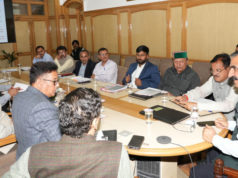Shimla: In a significant development, the Forest Department of Himachal Pradesh has amended rules concerning the cutting of dangerous trees. As per the latest orders, DFOs are now authorized to manage and execute the removal of hazardous trees under Rule-133. This change is expected to bring much-needed relief to residents, as dangerous trees that pose threats to life and property can now be felled more swiftly and efficiently.
Earlier, after obtaining permission to cut trees, individuals had to rely on the Forest Development Corporation for the actual removal. This process often involved delays, especially in remote areas where the Corporation’s resources were limited. The new orders aim to streamline the process, with the DFO directly overseeing the felling of dangerous trees and keeping detailed records of all actions taken.
The state’s Chief Conservator of Forests has also been instructed to submit regular progress reports, ensuring transparency and efficiency in the implementation of the new rule. People who had to wait for lengthy procedures will benefit greatly from this streamlined system.
The decision to empower DFOs follows a letter from the State Forest Development Corporation to senior forest officials, highlighting the presence of dangerous trees across the state. In many cases, people had already obtained permission to cut these trees, but due to logistical challenges, the trees remained standing, posing continued risk. The Forest Department’s new guidelines aim to address this issue by allowing the DFO to take immediate action where necessary.
Following the recent natural disasters in Himachal Pradesh, many trees have become hazardous, threatening homes, infrastructure, and public safety. Multiple applications for tree felling under Rule-133 remain pending, and the department’s previous reliance on the Forest Development Corporation contributed to delays. The new rules now expedite the process, ensuring quicker response times in emergencies.
DFOs have also been granted the authority to hire contractors and use internal resources to ensure the trees are cut safely and efficiently. Where direct management is not possible, alternative mechanisms can be deployed to mitigate the risk posed by these trees. This shift in policy is expected to have a positive impact, particularly in areas prone to landslides, heavy rainfall, and other natural calamities, where unstable trees can pose severe risks to life and property.






